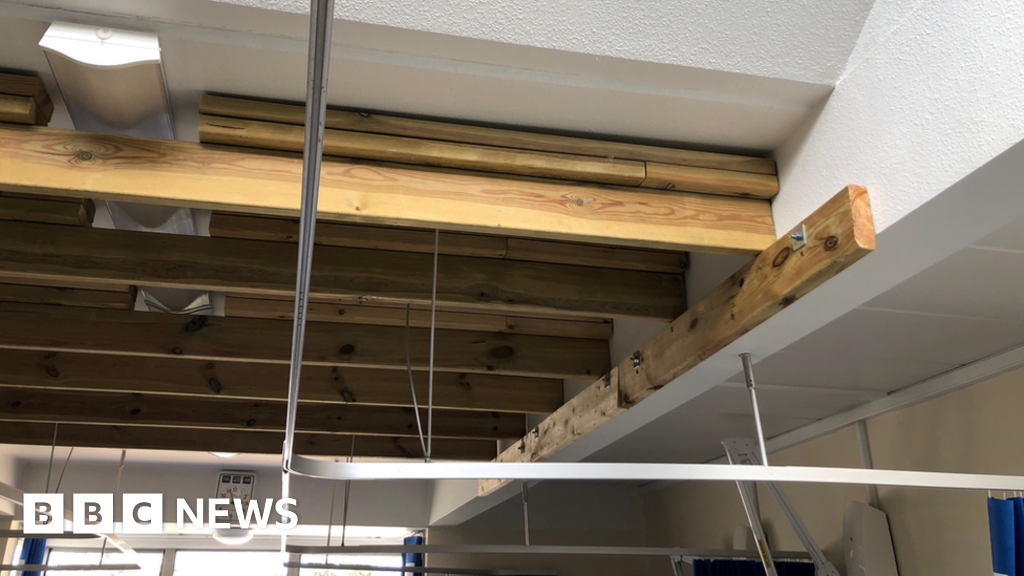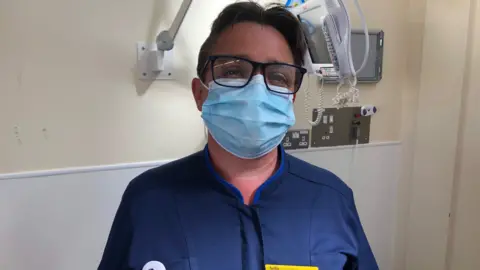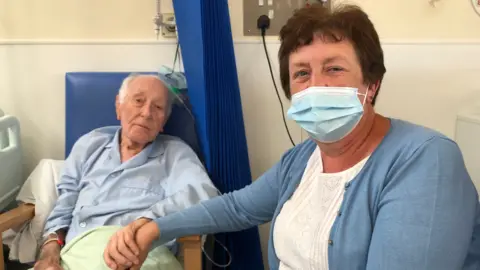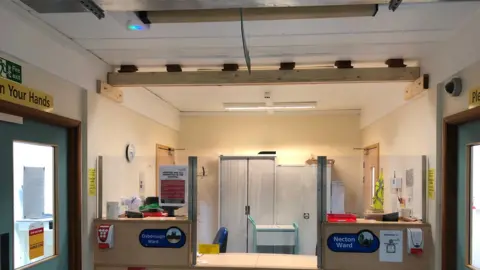
Propped-up hospital makes bucket plan to catch rain
[ad_1]
 Shaun Whitmore/BBC
Shaun Whitmore/BBCStaff at a hospital with 1,500 props supporting its roof have had to plan where to place buckets when it rains.
The Queen Elizabeth Hospital, in King’s Lynn, Norfolk, has steel and wooden posts in 56 areas.
Karon Strong, head of nursing for medicine, said staff knew “exactly where the buckets would need to go” to catch water when rain was forecast.
“It’s not what staff want to experience and it’s not what the staff want for the patients either,” she said.
“You’ll walk down a corridor, you’ll walk down a bay and we’ve got buckets catching water.
“As you can imagine, if you’re a patient lying in a bed, and looking up, its really quite a frightening experience for the patient.”
 Shaun Whitmore/BBC
Shaun Whitmore/BBCJackie Rushbrooke said her husband Reg, who has been in hospital for two weeks, was “quite frightened” by the props.
“He mentioned it when he first came in,” she said, while praising the quality of nursing care.
She added: “I think when he’s in bed and that’s all he can see, it’s frightening sometimes for him.”
 Shaun Whitmore/BBC
Shaun Whitmore/BBCCaroline Shaw, hospital chief executive, reassured patients the roof was safe and said a team was checking it on a daily basis.
She understood some patients might find the situation “frightening” and said staff were doing all they could to explain the situation to patients.
Ms Shaw, who previously ran a city hospital in Nottingham, said she was “hugely shocked by the environment here, and by the state of the hospital, and I guess really by the lack of capital investment in the past”.
She said she was “absolutely determined” to get a new hospital.
 Shaun Whitmore/BBC
Shaun Whitmore/BBCThe trust is waiting to hear if it will be one of those eight across England that will be chosen to get a new hospital.
The hospital opened in 1980 and was one of seven hospitals built using a material called reinforced autoclaved aerated concrete.
This material has serious weaknesses and is deteriorating, with uncertainty over its structural integrity leading to more than £100m being spent this financial year on safety measures across the affected sites.

[ad_2]
Source link





